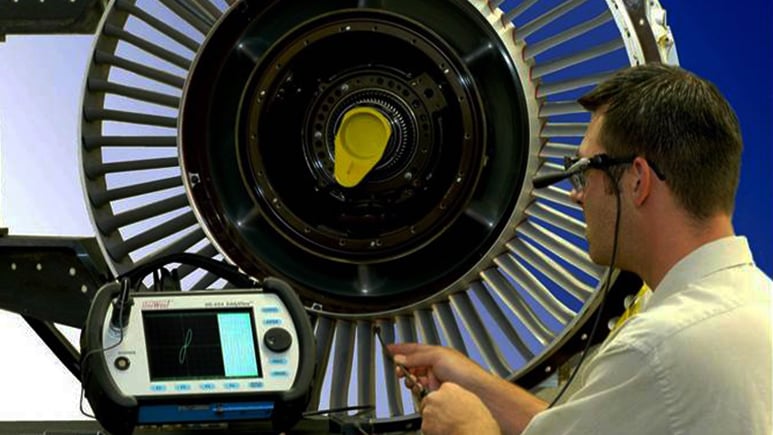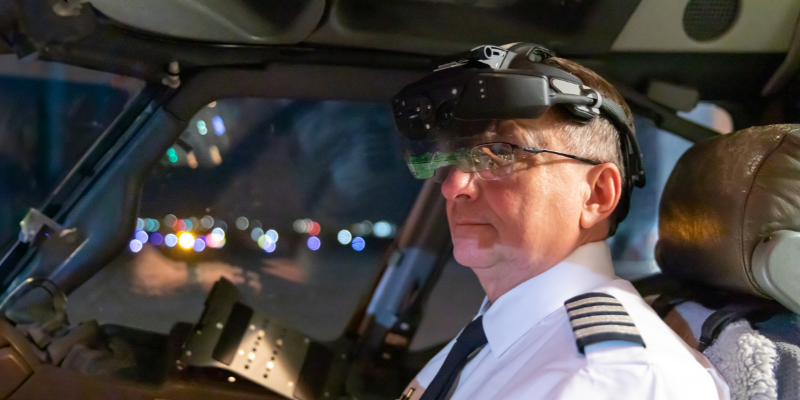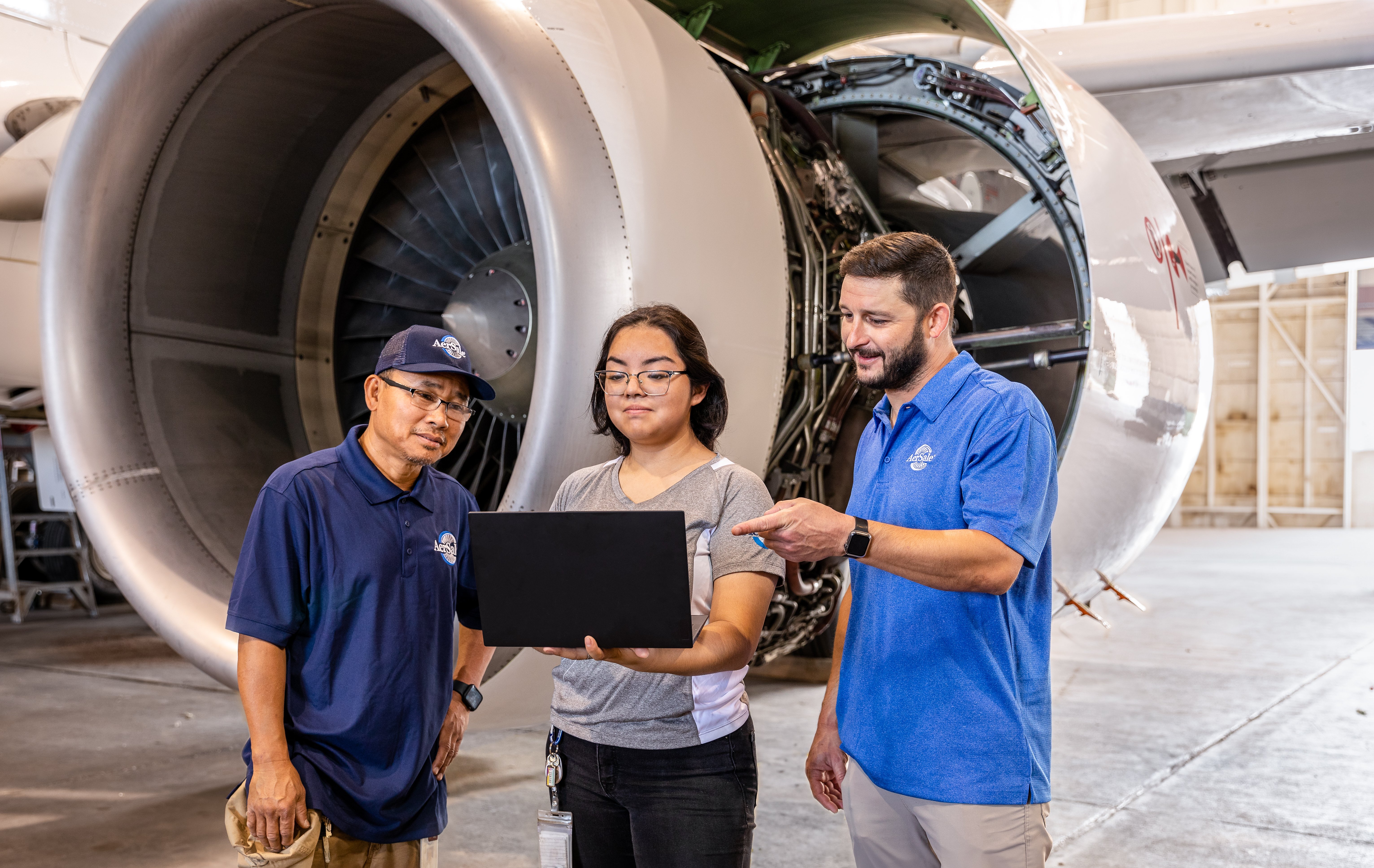Jet engines on commercial aircraft are governed by strict regulations spanning materials, manufacturing, quality control, and operations. Modern aircraft engines can operate for thousands of hours without requiring inspection, repair, or service, and have played a key role in improving the aviation industry’s overall safety record. But despite the regulations and advancements in technology, engines must be inspected to ensure efficiency and safety. And when engines do fail, they constitute the most costly segment for aircraft MRO.
When designing your aircraft MRO strategy, engine inspections and tests are an essential part of the equation. Explore these eight inspection types used widely in the global aviation industry. Then, contact AerSale®’s National Aerospace Standard (NAS) 410 Level III and Level II technicians to keep your engines operating at peak performance.
Eddy Current Testing
Widely used in the aviation industry, eddy current testing is one of the most effective nondestructive means of detecting discontinuities in fan blades. Using magnetism and electricity, eddy current testing creates a magnetic field in the area being inspected, immediately identifying defects at the surface and near surface, ranging in size from sensitive to small. Aside from crack detection, eddy current testing can also be utilized to spot corrosion, measure conductivity, coating thickness, material identification, and heat-treated parts.
Ultrasonic Testing
Ultrasonic testing is a non-destructive test (NDT) technique that uses high-frequency sound waves to detect flaws, measure thickness, and evaluate material properties. Like sonar, ultrasonic testing produces sound waves that create a picture revealing key insights into a given material. These sound waves transform when a defect or discontinuity is identified.
In the aviation industry, ultrasonic testing is often employed for flaw detection, thickness measurement, and other more complex evaluations. It can be used effectively for a wide variety of material types and parts ranging from bonded structures and landing gear to engine components.
Bond Testing
Bond testing is employed to validate the structural integrity of many aircraft materials. Highly portable and cost-effective, this testing can evaluate bonds that are metal to metal, metal to composite, and composite to composite, as well as a variety of plastics.
Magnetic Particle
Magnetic particle testing for aircraft engines detects surface and shallow subsurface discontinuities in ferromagnetic materials—iron, cobalt, nickel, and others—using magnetic fields and particles. When an item is being magnetized, discontinuities shift toward the direction of the field, causing a leakage field. Fine ferromagnetic particles are then applied over the surface of the part, forming an outline that identifies key characteristics of the issue such as size and shape.
Fluorescent Penetrant Inspection
Fluorescent liquid penetrant is a widely-used, cost-effective method for identifying surface-level defects that react to fluorescent light. During a fluorescent penetrant inspection, imperfections in non-porous materials—ceramics, plastics, and metals—are illuminated by ultraviolet radiation, causing a bright yellow glow easily observable by trained technicians like the ones at AerSale.
Resonance Testing
Audible inspection techniques such as the “coin tap” are some of the oldest, most efficient mechanisms used to reveal broken bonds—known as disbonds—within an aircraft composite structure. During this inspection, the material is lightly struck with a specialized tapping tool, as the examiner listens for the signature flat pitch of a defect.
Thermal Imaging
All objects with a temperature above absolute zero emit heat frequencies that produce a type of infrared radiation. Thermal imaging can detect flaws and weaknesses in objects by producing images of that radiation, called thermograms. The transference of heat through component parts spots disbond or water entrapment, while thermal cameras take that a step further by identifying minuscule fluctuations in temperature to more accurately diagnose issues.
CFM56-7B Engine Inspections
For CFM56-7B engines, CFM SB CFM56-7B S/B 72-1033 requires a repetitive fan blade dovetail ultrasonic inspection. This inspection utilizes a special ultrasonic NDT kit and can only be performed by General Electric factory-trained NDT technicians. AerSale has completed this rigorous training and is fully authorized to conduct these CFM56-7B tests.
CFM continually updates its service requirements, recently reducing the repetitive inspection interval from 3,000 cycles to 1,600 cycles. Trust AerSale to keep you up-to-date on the latest bulletins and requirements for CFM56-7B engines and more.
Contact AerSale’s engine inspection experts today to discover how an integrated approach to MRO will keep your aircraft operating safely and at peak performance throughout their service life.






